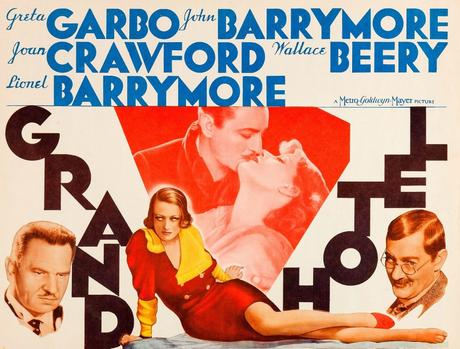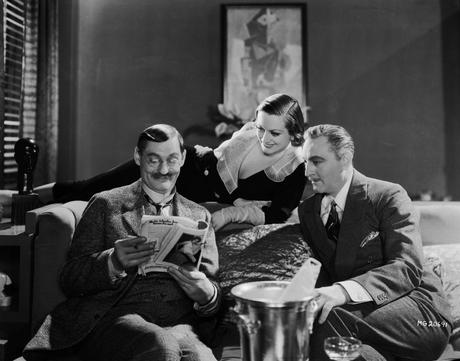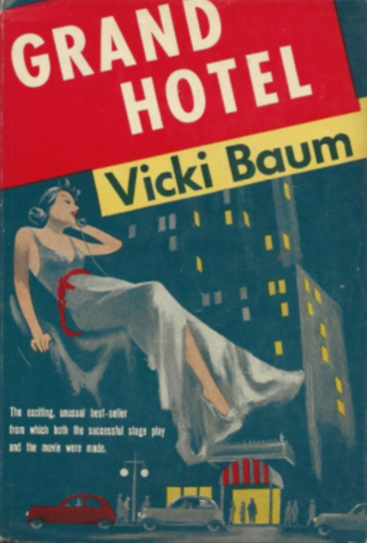
Grand Hotel holds a very unique place in film history. It’s credited with popularizing the concept of the all-star ensemble cast. It has the distinction of being the only movie to ever win the Best Picture Academy Award without being nominated in any other category. It was the first time Lionel and John Barrymore appeared in a movie together. And it’s the movie where Greta Garbo delivered the infamous line, “I want to be alone,” which remains one of the most famous movie quotes of all time.
In addition to all of that, Grand Hotel has also been a successful stage play. Both the movie and the play were based on Vicki Baum’s 1929 hit novel Menschen im Hotel. So how does the book compare to the movie?
Book & Movie Differences
On the whole, the film version of Grand Hotel isn’t hugely different from the book. There are differences to be found, but a lot of them are pretty minor. Some of the more significant changes involve the timeline of events. For example, Garbo’s Grusinskaya checks out of the hotel at the very end of the film, but she leaves about a third of the way into the book. And Flaemmchen, played by Joan Crawford, is introduced very early in the movie, but she doesn’t come into the book until quite a bit later. In the book, Preysing (played by Wallace Beery in the film) doesn’t even actually need to have Flaemmchen working for him at all because he finds out that the business talks in Manchester had broken off before she was brought on to help; he just kept moving forward in an attempt to save face. The same thing happens in the movie, but Preysing gets the news after Flaemmchen has already started working for him.

In the movie, all of the action happens either within the hotel or in the area immediately outside of the hotel, but the book gives some of the characters a chance to get out and explore a bit more. A good part of the book covers Kringelein (Lionel Barrymore in the film) and Gaigern (John Barrymore in the movie) going out on the town doing things like getting a new suit for Kringelein, driving fast in a car, going up in an airplane, watching a boxing match, and going to a gambling house. Even though this is a notable part of the book, a lot of that is reduced to one sentence in the movie. The book also spends more time with Gusinskaya at her ballet performances and covers Gaigern going to one of her shows to learn more about her routine. It also covers Kringelein and Dr. Otternschlag (Lewis Stone in the film) attending one of her sparsely-attended performances.
The book also gives you the chance to spend some time with some of the characters in ways you don’t get to in the movie, which helps you understand them better. We learn more about why, exactly, Kringelein was so determined to spend his remaining days living in luxury. Preysing is painted more clearly as being a respected family man going off the rails. In the case of Grusinskaya, it describes her sitting in her dressing room after a performance like a boxer after a fight, follows her as she roams through the streets of Berlin after walking out of a performance, and details the relationship she has with her body.

It’s been said that Greta Garbo was reluctant to play Grusinskaya in the film version of Grand Hotel because she thought she was too old for the part. But when you read the book, you realize that Garbo was actually much too young. In the book, we learn that Grusinskaya has an eight-year-old grandchild. Many mentions are made about the signs of aging on her skin and Gaigern notes that she has scars from a facelift. On a related note, Gaigern is described is being younger than John Barrymore was when he made the film.
Is the Book Worth Reading?

For the most part, I enjoyed the book. As I said, the movie follows the book pretty well, but the book is just different enough to make it feel like you’re getting something new from it. But with that said, I know the movie version of Grand Hotel isn’t everyone’s cup of tea and even if you do like the movie, the book can drag at times.
The fact that we get to spend more time with individual characters works well at times and not so well at others. I loved the parts about Grusinskaya and the part when Gaigern is trying to sneak into her hotel room was very engaging. But then there were times when I was really struggling to keep my interest up. For example, I never once watched Grand Hotel and found myself wishing I could learn about Preysing’s business dealings in more detail, but that’s something the book gave me whether I wanted it or not. And I’m not exactly disappointed that most of the information about Kringelein’s big day out on the town with Gaigern was summed up more succinctly in the movie version.
The changes in pacing for the movie make the movie version my preferred version of the story, but when the book is at its best, it’s excellent and it’s easy to understand why it remains such an influential story several decades after its initial publication.
This review is part of the 2021 Classic Film Summer Reading Challenge hosted by Out of the Past. For more reviews on books related to classic film, be sure to follow the #ClassicFilmReading hashtag on social media.
